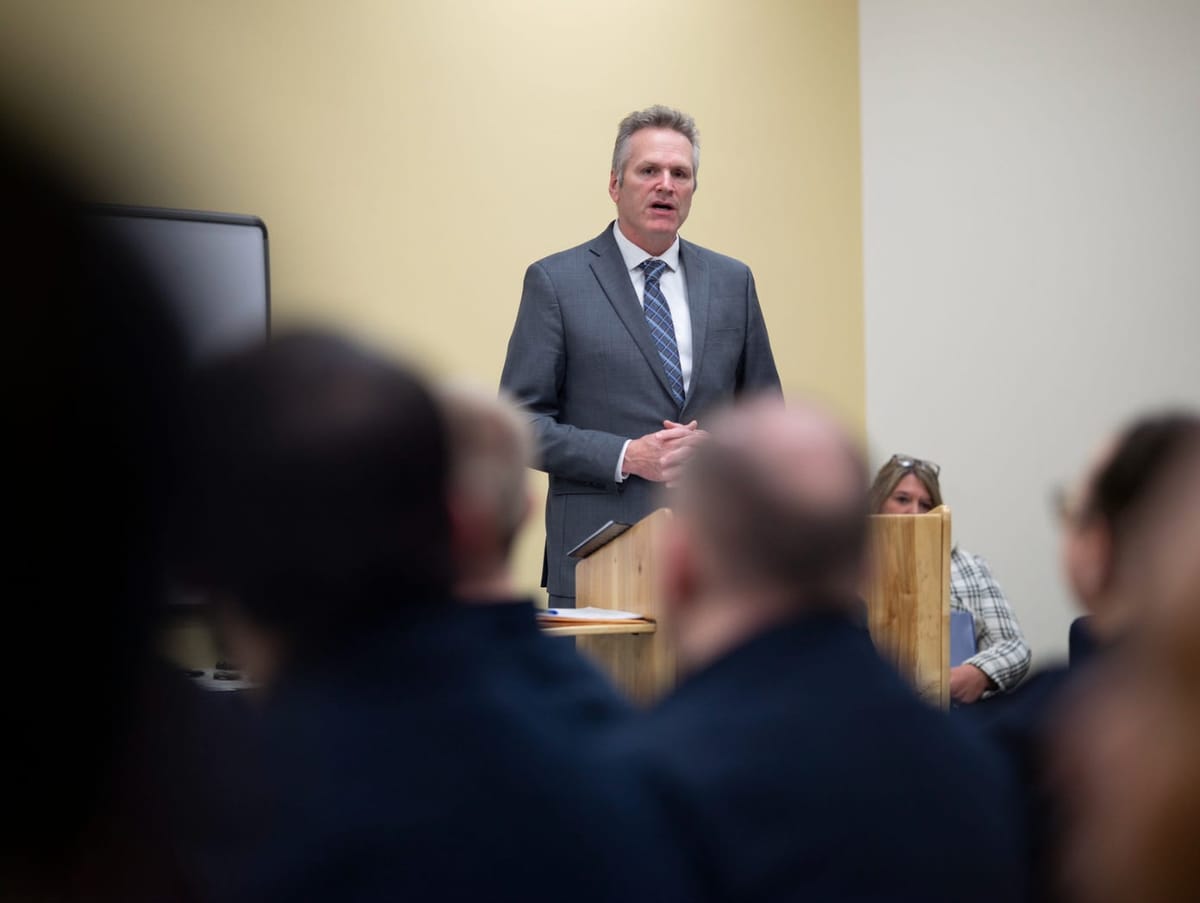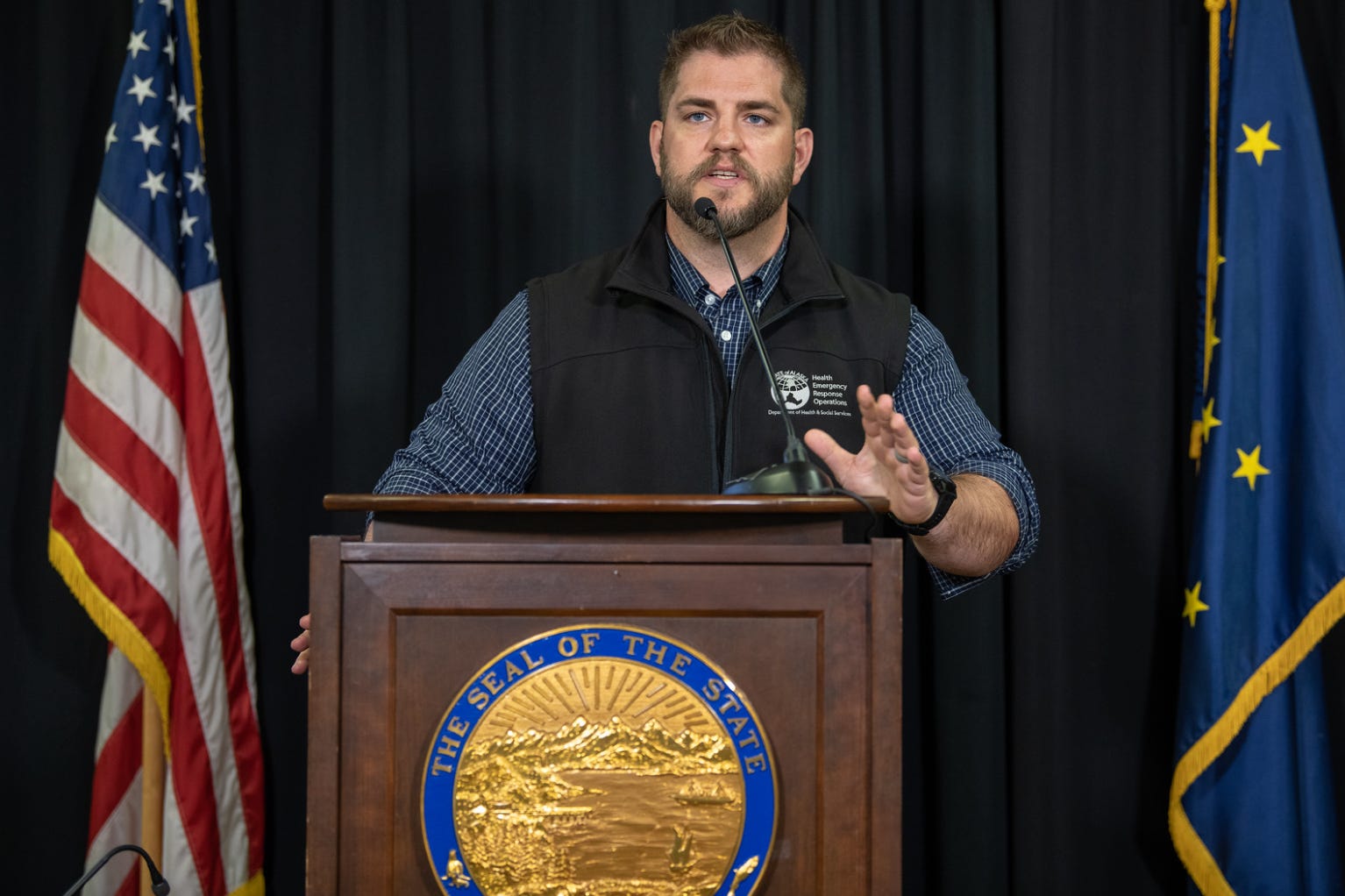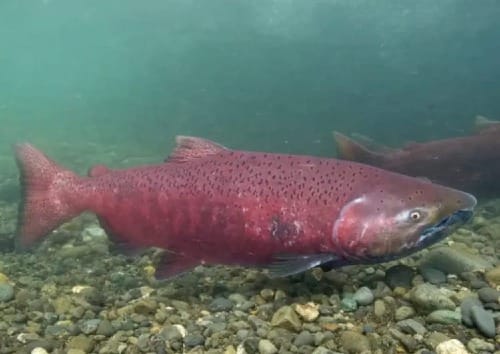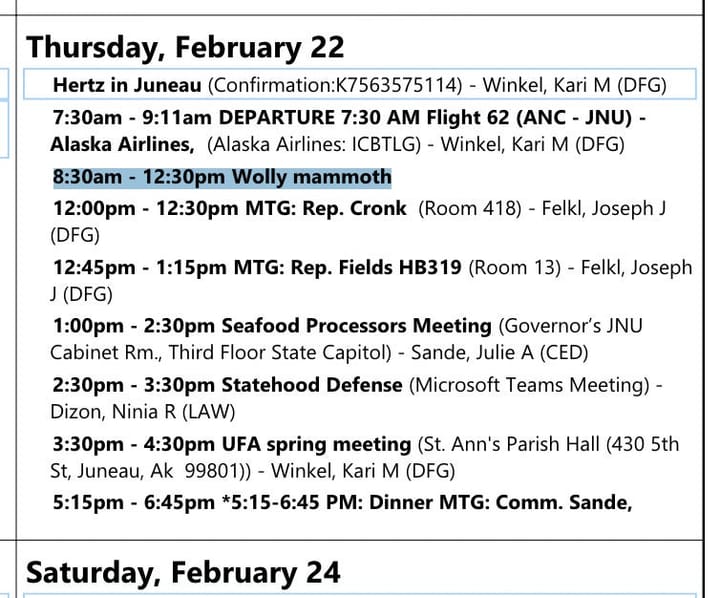A second-term Dunleavy administration will look very different from the first
And, scroll down for a bit of news from Alaska's economic development arm.

Alaska GOP Gov. Mike Dunleavy announced three major appointments Monday, choosing a permanent chief of staff and two departmental commissioners.
The appointments, by themselves, were not especially newsworthy or surprising. Adam Crum, the new revenue commissioner, already held a cabinet position as commissioner of the Department of Health. The new acting health commissioner, Heidi Hedberg, was previously the state public health director, and Tyson Gallagher, the new chief of staff, already had that job in an acting role.
Northern Journal is a reader-supported publication. Sign up for free to receive new posts, and consider becoming a paid subscriber to support this work.
Here’s why these announcements, collectively, still matter.
Four years ago, when Dunleavy won his first gubernatorial election, he was still mostly a political outsider — even among establishment Republicans.
Dunleavy alienated many GOP lawmakers and political operatives by breaking from the party’s legislative majority when he served in the state Senate. Business figures were wary of some of his hard-line positions — particularly, his push to pay big Permanent Fund dividends, because of the risk that could force industry to pay taxes to fill a resulting deficit.
That left a shallow pool of experienced people from Alaska’s political and business worlds that the governor-elect could pick from for key cabinet positions in 2018.
His initial appointments were a hodge-podge of far-right allies, opportunists and operatives who Dunleavy trusted from their work on his campaign — even if they lacked, in many cases, the political relationships and experience that governors typically lean on to advance their agenda through the legislative process.
Those appointments included:
• national conservative operative Donna Arduin, who, as Dunleavy’s initial budget director, became the face of the governor’s deeply unpopular line-item vetoes in his first year in office.
• Kelly Tshibaka, who left her administration commissioner job after two years to launch a GOP bid for U.S. Senate and was endorsed by former President Donald Trump.
• Kevin Clarkson, the socially conservative lawyer who resigned as attorney general when the Anchorage Daily News and ProPublica printed his inappropriate texts to a low-level female staffer.
• Tuckerman Babcock, the former Alaska Republican Party chairman, who left his job as Dunleavy’s first chief of staff job after less than a year.
Arduin, Clarkson and Babcock were all involved in some of Dunleavy’s most polarizing early decisions, from budget vetoes to losing lawsuits to dismissals of state attorneys. And some of those decisions helped prompt the campaign to recall him, which started in Dunleavy’s first year in office and appeared to have a legitimate shot at success until the COVID-19 pandemic took hold.
Now, with Dunleavy on the precipice of another term — he has 52% of votes and appears likely to keep his lead when outstanding ballots are counted — his personnel announcements this week telegraph a more pragmatic and centrist four years ahead.

Crum, while lacking the finance credentials typical for a revenue commissioner, has already served four years in Dunleavy’s administration. While some Alaskans were disappointed that Crum’s health department didn’t take more aggressive action on issues like vaccines and mask mandates, he largely avoided gaffes and scandals while leading the state’s most visible agency through the COVID-19 pandemic.
Hedberg, the replacement health commissioner, has even less experience in electoral politics than Crum, who once ran for state Senate as a Republican. Hedberg worked in the nonprofit sector before joining state government in 2009 and, like Crum, avoided negative press and gaffes while leading a key branch of government through the pandemic.
Gallagher — disclosure, he’s a friend of mine — is a longtime Dunleavy ally who’s done ample work on Republican campaigns. But he also has experience in and connections to Alaska’s business world from his time working as a lobbyist for telecommunications firm GCI. And he formed relationships with lawmakers and staffers from both parties while he worked as a legislative aide in Juneau.
The collective message from these three appointments is that Dunleavy is moving toward a less ideological and more mainstream conservative agenda in his second term.
The big question is how that will translate into results. Ironically, the governor’s early hard-line agenda, on a number of issues, united an otherwise fractious Legislature against him. It’s possible that Dunleavy, with support from his retooled team, could make much more progress carrying out a moderated conservative agenda.
We’ll find out more once the state House and Senate organize into their new majority caucuses — and Dunleavy will also likely announce more key appointments if he’s sworn in for another term.
New contracts for AIDEA
The Alaska Industrial Development and Export Authority, the state’s embattled economic development agency, put out two requests for proposals Monday.
One is asking for an economic study of AIDEA’s economic impacts in the state in response to a damning report released earlier this year by an advocacy group, SalmonState. The SalmonState report, drafted by respected economists Milt Barker and Gregg Erickson, said AIDEA’s expensive investments had cost the state $10 billion over the past four decades. (The agency has become a target for conservation and good government groups because of its involvement in development projects like oil exploration in the Arctic National Wildlife Refuge and new road proposals.)
AIDEA’s request calls for a new, “independent” economic report that will examine the “economic, fiscal and functional impacts on the state of Alaska since the authority’s inception in 1967,” including its “impressive economic and investment history” and its “central role in facilitating, supporting, and advancing economic growth and diversification within the state.” AIDEA says it expects to spend between $100,000 and $250,000 on the new report.
Second, the authority is looking for a consultant to help with stakeholder outreach on the contentious proposed West Susitna access road. AIDEA doesn’t list the anticipated cost of this work.
In related news, the Bureau of Land Management said in a court filing Tuesday that it will issue its final decision on AIDEA’s proposed Ambler road project in the fourth quarter of 2023.
The Trump administration had previously approved the controversial, 200-mile road, which would run through Gates of the Arctic National Park and access a major mining district in the Kobuk River watershed. But the Biden administration, under pressure from some of the tribal groups opposed to the road, is drafting a supplemental environmental impact statement and studying preliminary comments to see if it needs to consider different alternatives, it said in Tuesday’s federal court brief.
The full four-page filing is below.

Blm Status Update113KB ∙ PDF fileDownloadDownload
.



